The 21st annual Art Taipei kicked off on Friday with an eclectic concoction of colors, cultures and characters. The four-day art fair extravaganza which is currently taking place at the Taipei World Trade Center (台北世界貿易中心展覽) certainly lived up to its promise of not just appealing to high-rolling buyers, but also to ensuring that the experience of gallery-viewing was a more relatable and enjoyable one for the general public. Artists mingled with art enthusiasts, a variety of languages were spoken and the atmosphere was, largely speaking, lively and devoid of pretentiousness.
There were the usual big names — for instance, Annie Leibovitz’s 1998 portraiture of Yo-yo Ma with a cello hiding his face — but young, up-and-coming artists from all over Asia really held their own ground at Art Taipei this year. Moreover, the collections on display were far from conservative — vibrant colors, flirty motifs and contemporary reinterpretations of historical issues were among the most prominent themes tying the fair together.
HISTORY LESSONS
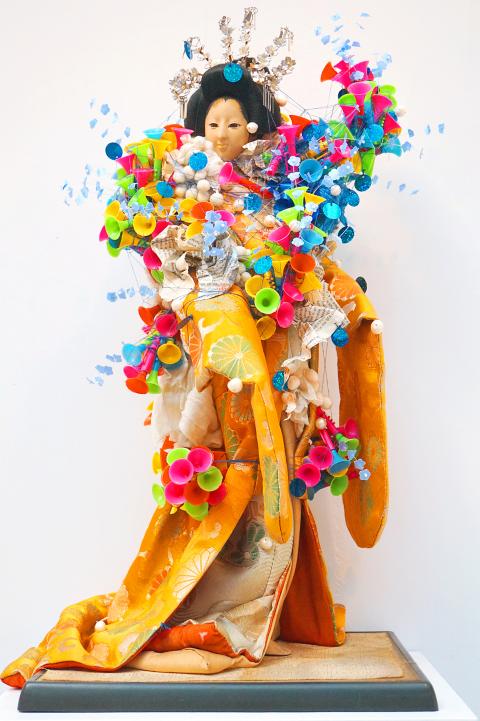
Photo: Dana Ter
A sizeable portion of artists this year hailed from Southeast Asia. Australian-based Filipino artist Miguel Aquilizan — whose headgear made out of taxidermy animals attracted as much attention as his artwork did — was one of these young artists chosen to represent the region.
Despite his chaotic ensemble, Aquilizan was calm and collected as he explained to the Taipei Times the symbolism behind his carefully refashioned Japanese dolls dating back to World War II which he had collected from antique shops around the Philippines. He acknowledged the utter physical and cultural destruction which occurred in his country, but also expressed a need to move on by constantly reinventing new meaning out of past catastrophes.
“I gather objects, research into their past and then create new meaning out of them. When I found the dolls, they looked very melancholic, so I reworked them to make them appear more cheerful,” Aquilizan said.
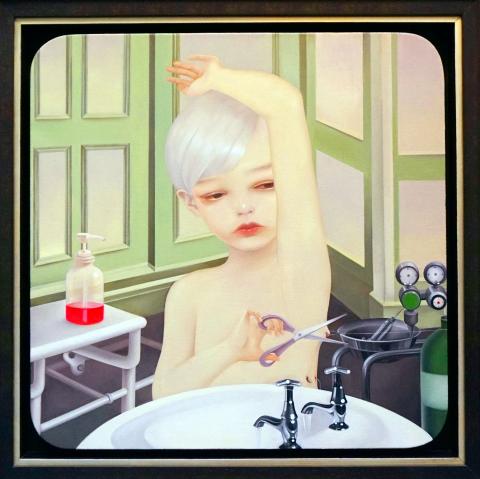
Photo: Dana Ter
The result is a fusion of different cultures, which is an inevitable fixture of modern-day life due to historical processes like colonialism and migration. The vibrant colors, rattan weavings and thick feathers, all of which are sewn into the dolls, are distinctly Filipino while the kimonos are obviously Japanese. On a lighter note, the dolls’ impeccable fashion sense are a nod to Aquilizan’s interest in fashion design.
On the other side of the historical pendulum, artist Nobuaki Takekawa’s oil on canvas Cicada Eclosion and I, 1250 Years (2014), provides a critical view of Japanese history over the past centuries. The painting resembles a genealogical chart with generations of offspring sprouting from common ancestors. Earlier generations are cicadas and their descendants are farmers and horsemen, eventually evolving into modern people.
The cicada motif is important since cicadas are meant to symbolize reincarnation in Japanese culture. Nobuaki’s depiction of the Nazi German flag and the Rising Sun flag alongside recent protests against the Shinzo Abe government draws similarities between past and present, suggesting that history repeats itself.
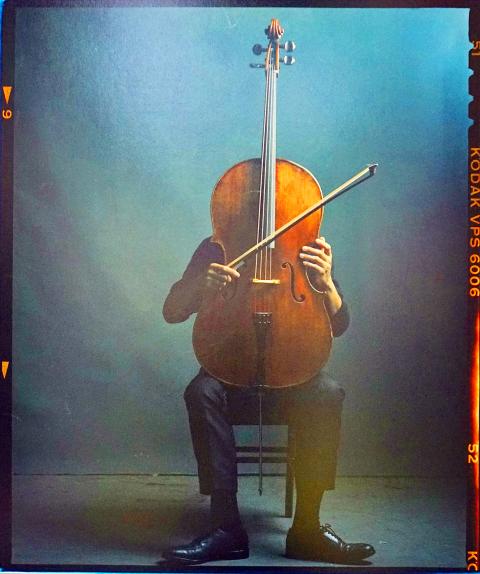
Photo: Dana Ter
ANIMAL INSTINCT
Animal imagery was surprisingly abundant at this year’s fair. Malaysian artist Haffendi Anuar’s Liquid Serpents 4 (The Garden) (2014) was eye-popping in the sense that his vinyl-printed snakes seemed like they would jump out and bite you despite being encased in multiple layers of Plexiglas.
Anuar said that he had always been fascinated by cold-blooded invertebrates like slugs, squids and snakes because despite their seemingly repulsive nature, there’s a certain earthiness to them that he finds alluring.
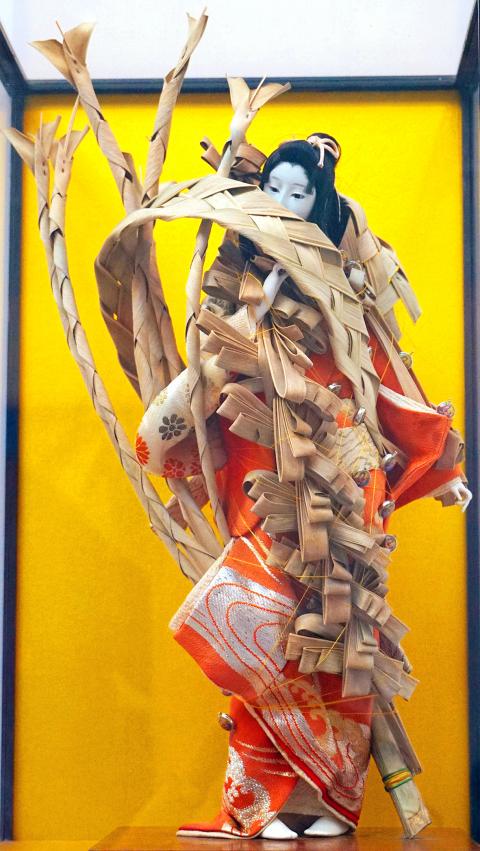
Photo: Dana Ter
“As we modernize, we tend to stray away from nature,” Anuar said, “but nature finds a way to get back into your life. For instance, we wash our hands from soap made out of aloe vera and wear face masks made out of snail slime.”
Anuar added that snakes represent knowledge but are protective of it like in the Garden of Eden story. He was also drawn to the cyclical nature of their skin and how it symbolizes the humdrum repetitiveness in our own modern-day lives — something universally relatable. On the other hand, according to Anuar, the oil spills interwoven with the snakes’ bodies are representative of Malaysia’s dependency on its oil industry.
Meanwhile, Shenyang-born, Beijing-based Chinese artist Shi Mohan (史墨涵) taps into the theme of loss of innocence, but through human rather than animal subjects. The young artist is known for depicting her innermost thoughts and morbid fantasies. Subjects like a child’s cherubic face, which seems pretty at first glance, are sullied when viewers realize that the child is holding a bloodied skull or that its limbs are distorted or, in the case of Surgery (2014), that she is performing surgery on herself.
LIGHT-HEARTED BUT WITTY
Other pieces of artwork were more light-hearted but equally witty and imbued with criticisms and commentary on modern-day life.
Taiwanese artist Chang Li-ren’s (張立人) animated photo frame Classic Skin Flick Series 12 (2013) appears to be a pleasant portrayal of a 1930s Shanghai-style pin-up girl with a bob haircut which were used for cigarette ads during the time. However, the model in the photo frame starts moving and pealing off her clothes one by one until she is sitting completely nude.
Despite the viewers’ gasps and giggles, the process of undressing is not just a silly act, but could be representative of the shift in public perceptions in Taiwan and in other countries of sex being a taboo topic to being something that is more openly embraced and discussed.
Similarly, Nissem Ben Aderet’s depictions of human figures interlocked and stacked on top of each other, sometimes sharing the same limbs, are comical yet deeply reflective. Upon closer examination, the Israeli artist’s artwork, which is all done with a single stroke of a marker is evocative of the stress and fatigue arising from over-crowdedness in big cities.
One does not need to be an art critic or high-flying buyer to attend Art Taipei this year. A lot of the artwork draws upon universal themes and will naturally speak to any open-minded, culturally-aware young person familiar with life in a global city, circa 2014.
Art Taipei runs until tomorrow at the Taipei World Trade Center, Exhibition Hall 1 (台北世界貿易中心展覽大樓一館), 5, Xinyi Rd Sec 5, Taipei City (台北市信義路五段五號). The exhibition is open from 11am to 7pm today and 11am to 6pm tomorrow. Admission is NT$200 to NT$500. More information in English and Chinese can be found at art-taipei.com.
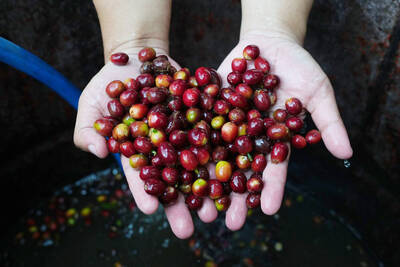
Climate change, political headwinds and diverging market dynamics around the world have pushed coffee prices to fresh records, jacking up the cost of your everyday brew or a barista’s signature macchiato. While the current hot streak may calm down in the coming months, experts and industry insiders expect volatility will remain the watchword, giving little visibility for producers — two-thirds of whom farm parcels of less than one hectare. METEORIC RISE The price of arabica beans listed in New York surged by 90 percent last year, smashing on Dec. 10 a record dating from 1977 — US$3.48 per pound. Robusta prices have
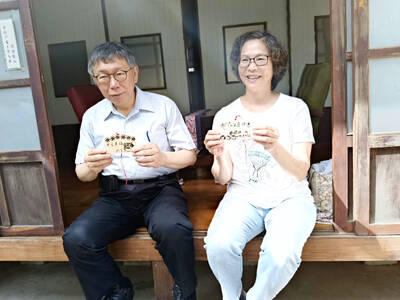
The resignation of Taiwan People’s Party (TPP) co-founder Ko Wen-je (柯文哲) as party chair on Jan. 1 has led to an interesting battle between two leading party figures, Huang Kuo-chang (黃國昌) and Tsai Pi-ru (蔡壁如). For years the party has been a one-man show, but with Ko being held incommunicado while on trial for corruption, the new chair’s leadership could be make or break for the young party. Not only are the two very different in style, their backgrounds are very different. Tsai is a co-founder of the TPP and has been with Ko from the very beginning. Huang has
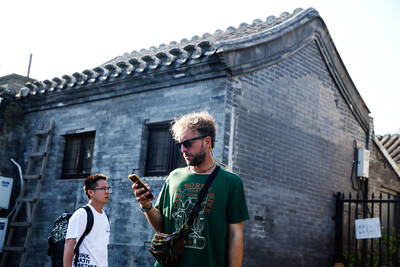
A few years ago, getting a visa to visit China was a “ball ache,” says Kate Murray. The Australian was going for a four-day trade show, but the visa required a formal invitation from the organizers and what felt like “a thousand forms.” “They wanted so many details about your life and personal life,” she tells the Guardian. “The paperwork was bonkers.” But were she to go back again now, Murray could just jump on the plane. Australians are among citizens of almost 40 countries for which China now waives visas for business, tourism or family visits for up to four weeks. It’s
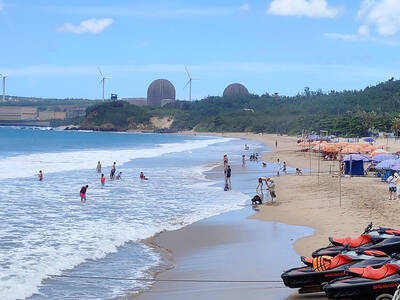
A dozen excited 10-year-olds are bouncing in their chairs. The small classroom’s walls are lined with racks of wetsuits and water equipment, and decorated with posters of turtles. But the students’ eyes are trained on their teacher, Tseng Ching-ming, describing the currents and sea conditions at nearby Banana Bay, where they’ll soon be going. “Today you have one mission: to take off your equipment and float in the water,” he says. Some of the kids grin, nervously. They don’t know it, but the students from Kenting-Eluan elementary school on Taiwan’s southernmost point, are rare among their peers and predecessors. Despite most of